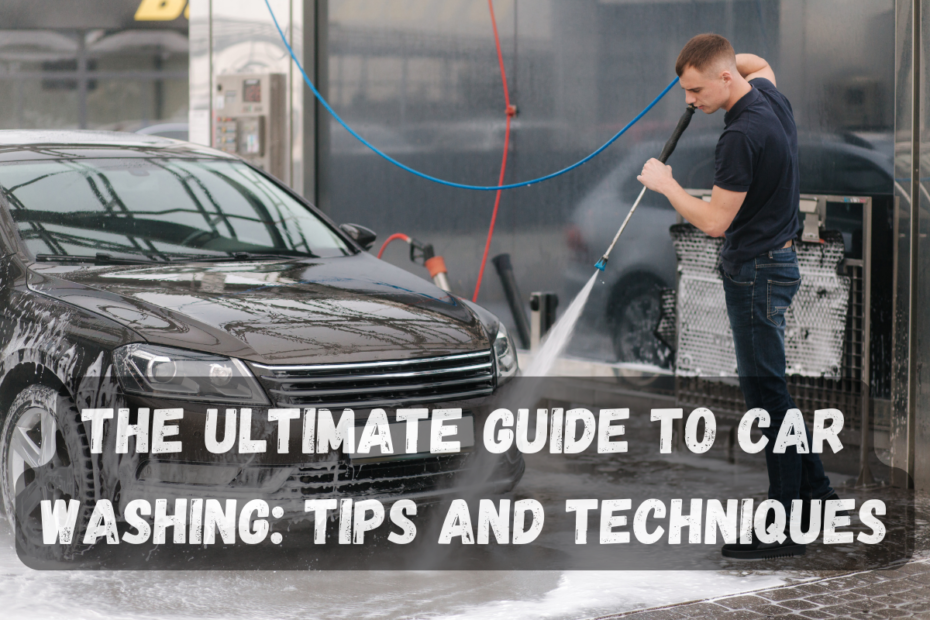Keeping your car clean isn’t just about aesthetics; it’s also about maintenance and prolonging the life of your vehicle. Regular washing removes dirt, grime, and harmful contaminants that can damage your car’s paint and finish. Whether you’re a car enthusiast or simply want to keep your vehicle in top condition, this ultimate guide to car washing offers tips and techniques to achieve a professional-level clean at home.
Why Regular Car Washing is Important
Regular car washing is essential for several reasons:
- Protects Paint and Finish: Dirt, bird droppings, tree sap, and road salt can all damage your car’s paint over time. Regular washing removes these contaminants, preserving the finish.
- Improves Visibility and Safety: Clean windows and lights ensure better visibility and safety on the road.
- Maintains Value: A well-maintained car retains its value better, making it more appealing to potential buyers.
- Prevents Rust and Corrosion: Removing grime and salt helps prevent rust and corrosion, which can compromise the structural integrity of your vehicle.
Essential Car Washing Supplies
Before you start, gather the following supplies:
- Car Wash Soap: Specially formulated to remove dirt without stripping wax or damaging paint.
- Buckets: One for soapy water, one for rinsing.
- Microfiber Wash Mitt: Gentle on paint and effective at picking up dirt.
- Microfiber Towels: For drying and detailing.
- Wheel Cleaner and Brushes: To tackle brake dust and grime on wheels.
- Wax and Polishing Compound: For extra shine and protection.
- Hose with Nozzle: Adjustable nozzle for rinsing and pressure control.
Step-by-Step Car Washing Process
Step 1: Choose the Right Location
Select a shaded area to wash your car. Direct sunlight can cause soap and water to dry quickly, leaving spots and streaks. A cool, shaded location prevents this and keeps the car surface from becoming too hot.
Step 2: Pre-Rinse Your Car
Use a hose with a nozzle to thoroughly rinse your car. This removes loose dirt and debris, preventing scratches when you start washing. Pay attention to the wheels and undercarriage, where dirt tends to accumulate.
Step 3: Prepare Your Buckets
Fill one bucket with water and add the recommended amount of car wash soap. Fill the second bucket with plain water for rinsing your wash mitt. This two-bucket method helps keep dirt out of the soapy water, reducing the risk of scratching the paint.
Step 4: Wash the Car
Start washing from the top down. Use a microfiber wash mitt, soaking it in the soapy water, and gently wash a section of the car. Rinse the mitt in the plain water bucket frequently to remove dirt. Move systematically, washing the roof, windows, hood, trunk, and sides.
Step 5: Clean the Wheels
Use a dedicated wheel cleaner and brushes to clean your wheels. Brake dust and road grime can be stubborn, so a good wheel cleaner is essential. Rinse thoroughly to remove all cleaner residue.
Step 6: Rinse the Car
After washing all sections, rinse the car thoroughly with a hose. Ensure all soap is removed to prevent spots and streaks. Work from the top down to ensure complete rinsing.
Step 7: Dry the Car
Use microfiber towels to dry the car. Patting the surface instead of wiping helps avoid scratching the paint. Drying quickly and thoroughly prevents water spots from forming.
Step 8: Apply Wax or Sealant
Applying a wax or sealant adds a protective layer to your car’s paint. It enhances shine and makes it easier to wash the next time. Follow the product instructions for application and buffing.
Step 9: Clean the Windows
Use a glass cleaner and microfiber cloth to clean the windows inside and out. Ensure they are streak-free for maximum visibility.
Step 10: Final Touches
Inspect your car for any missed spots. Clean the door jambs, mirrors, and trim. Check the tires and add tire shine if desired for a polished look.
Tips and Techniques for a Professional Finish
Use the Right Soap
Always use a soap specifically designed for cars. Household detergents can strip wax and damage the paint.
Avoid Scratches
Use high-quality microfiber mitts and towels. Cheap materials can cause micro-scratches that dull the paint over time.
Detail Regularly
In addition to washing, regular detailing helps maintain your car’s appearance. This includes polishing, waxing, and cleaning the interior.
Protect from the Elements
Consider using a car cover if you don’t have a garage. This protects your car from UV rays, rain, and debris.
Pay Attention to Problem Areas
Areas like the front grille, lower panels, and around the wheel wells often accumulate more dirt and grime. Spend extra time on these areas to ensure a thorough clean.
Maintain a Schedule
Establish a regular car washing schedule. Washing every two weeks is a good rule of thumb, but you may need to wash more frequently if you drive in harsh conditions.
Washing your car regularly and correctly is an essential part of vehicle maintenance. By following this ultimate guide to car washing, you can keep your car looking pristine while protecting its value and longevity. With the right supplies and techniques, you can achieve a professional-level clean right in your driveway.
